March 17, 2013 (Fairbanks, Alaska) – Here’s a recap of the final day of racing at the 2013 U.S. Cross Country Junior Nationals where the 10/15km Classic OJ and J1 races plus the 5km J2 races were held as Fairbanks, Alaska hosted fabulous competitons with spectacular racing as new champions were crowned.
![MOJ ...Saxton (r) takes Hanneman [P] Bert Boyer](http://skitrax.com/wp-content/uploads/2013/03/MOJ-Saxton-Hanneman.jpg)
Winners Pushed to the Finish Line by Good Friends in OJ Races
Ben Saxton and Hannah Boyer couldn’t coast to the finish in their wins of the Older Junior races in the 2013 Cross Country Junior Nationals. They had fierce competitors on their tales who also happened to be their friends.
Saxton, of Midwest, and second-place finisher Hanneman, of Alaska, are good friends and were teammates at the World Juniors. But it was Hanneman, a Fairbanksan, who won the other three golds at these races. Saxton finished second in each of those races, including an incredibly close final sprint finish on Thursday, and he didn’t mind taking one from Hanneman.
“It was a pretty great feeling to finally come out on top,” Saxton said.
Boyer had to out-climb and out-double pole good friend Felicia Gesior, of Great Lakes, who is also a teammate with Boyer at Northern Michigan University. Knowing her competitor so well made Boyer nervous about the close finish.
“She’s one of the best double-polers on our team,” Boyer said of Gesior.
![MOJ-leaders [P] Bert Boyer](http://skitrax.com/wp-content/uploads/2013/03/MOJ-leaders.jpg)
TWO SPRINTS DECIDE FIRST THROUGH FOURTH PLACES IN MEN’S OJ RACE
In the men’s OJ race, things really started to heat up in the third lap after the South Tower climb.
“It was super-fun because we were just chillin’ the first two laps,” said Hanneman. “Then Ben and I on the third lap were just dueling it out on every hill.”
With less than three kilometers left of the 15-kilometer race Saxton and Hanneman were leading and skiing side-by-side. “I was hoping to be able to drop him on the hills before, but coming up out of White Bear I couldn’t get rid of him,” Hanneman said.
That’s when Saxton knew he had a chance to win it.
“When he didn’t lose me there, right then I could tell he was kind of tired on the switchbacks,” said Saxton. “It happens every time, no matter what the race, the hairs kind of stand up on the back of your neck, and you’re like, ‘All right, I can take this.’”
That’s where the race for third place really started to heat up, too. With just over a kilometer to go as they dropped into Sidewinder, Eli Hoenig was leading Jack Hegman, both of New England. When they dropped into Warm-up with less than a kilometer to go Saxton and Hanneman were still neck and neck, but Hegman had pulled ahead of Hoenig.
As the leaders came climbing up Warm-up hill into the final stretch, Saxton pulled a little ahead of Hanneman and kept the lead as they double-pole sprinted to the finish.
“We both just launched it up the last hill, but he had a little bit more punch left up and over, so I couldn’t close it,” Hanneman said.
“The guy’s a killer sprinter,” Saxton said of Hanneman. “I fully expected him to come up and we would just go as hard as we could all the way to the line. That’s what we did, I just got a little bit on him before we got there.”
Saxton finished in 44 minutes, 13.5 seconds, just over one second ahead of Hanneman. Hegman and Hoenig were 30 seconds behind but they also had to sprint to the finish with Hegman winning third place by just three-tenths of a second.
By taking second Hanneman just missed out on sweeping the gold medals at this year’s Junior Nationals, a feat last accomplished four years ago by Hanneman. But he wasn’t upset. “Three out of four isn’t too bad,” he said, adding that he saw benefit in losing.
“It’s also probably pretty good to not necessarily win on the last one because then it makes you hungry for training for the next division,” he said.
![FOJ-Hannah Boyer [P] Bert Boyer](http://skitrax.com/wp-content/uploads/2013/03/FOJ-Hannah-Boyer.jpg)
BOYER COMES FROM BEHIND TO WIN HER LAST JUNIOR NATIONALS RACE
In the women’s OJ race, Gesior pulled ahead of the lead pack of seven skiers during the South Tower climb in the second lap of the 10-kilometer race.
“I didn’t know where anyone was, so I just went for it,” she said. Boyer saw Gesior and Sarah Friestone, of Alaska, pull ahead, but Boyer was behind three other racers. “I got trapped on the top of tower,” Boyer said. “I couldn’t get around them.”
Eventually, Boyer did get around them and Friestone, but by then Gesior had a sizeable lead. With less than three kilometers to go she had a 20-30 meter gap on Boyer, who was leading the now stretched-out pack. Boyer started to close that gap by the time they reached Sidewinder about 1.5 kilometers later. Friestone led a pack of four skiers chasing Boyer.
As they dropped into Warm-up for the last descent and climb, Gesior still had the lead but only by about 5-6 meters. “I knew she was coming, so I just tried to keep ahead of her,” Gesior said.
When they came back into sight climbing Warm-up hill with just over a 100 meters left, they were side-by-side. Boyer took the lead in that final stretch and opened enough of a gap to win by just over one second at 34 minutes, 26 second. Gesior was second at 34:27.1, and Friestone finished 20 seconds back at 34:46.3.
This is the last Junior Nationals for Boyer, who is from Fairbanks, so the win in her hometown was especially sweet. “I really wanted to end this on a good one,” she said.
![MJ1-Keegan Swirbul [P] Bert Boyer](http://skitrax.com/wp-content/uploads/2013/03/MJ1-Keegan-Swirbul.jpg)
AMERICANS KEEP NORWEGIAN GUEST SKIERS FROM J1 PODIUM SWEEPS
Once again the Norwegian skiers dominated the Junior 1 races in the 2013 Cross Country Junior Nationals, but the American racers didn’t let their guests take all the podium spots.
Keegan Swirbul, of Rocky Mountain, took third overall in the men’s race, which was good for the top American spot, and he finished just one second behind Norwegian and second-place finisher Sjur Slettom. “I was surprised I was that close,” Swirbul said.
Far West’s Peter Holmes, taking fourth, and New England’s Jack Schrupp, in fifth, both finished ahead of Norwegian Martin Thon to take the second and third American places. “It’s fun. They’re fast,” said Holmes.
In the women’s race, Marion Woods, of Alaska, reeled in Lisa Kvamme, of Norway, to take third place and the top place for the Americans in the women’s race. “I’m so glad they’re out here,” Woods said, adding that they helped increase the overall competition.
The Norwegian skiers also include twins Tiril and Lotta Weng, who took first and second, respectively, in the women’s race, and Mattis Stenshagen, who took first in the men’s race. The Norwegians are racing as guests as part of an effort to give American racers a taste of what’s possible with enough work and the right training and attitude.
Intermountain’s Lizzie Gill, who took fifth overall and the second American spot, likes the competition. “My dad always tells me that I should try to be skiing like Jessie Diggins,” said Gill, smiling, “but now he tells me to ski like Norwegians.”
The Norwegians are also learning from their experience over here, especially how to race on tight, curvy racecourses. “In Norway there are not so many corners,” said Stenshagen. “I like it.”
Slettom agreed. “I like trying something else,” he said, “not just climbing and sitting on the downhills.”
![FJ1-Tiril Weng-Lotta Weng [P] Bert Boyer](http://skitrax.com/wp-content/uploads/2013/03/FJ1-Tiril-Weng-Lotta-Weng.jpg)
WOODS BREAKS AWAY TO TAKE THIRD AND AN AMERICAN CHAMPIONSHIP IN WOMEN’S J1 RACE
The Norwegians looked to put the women’s J1 race away early. They started strong, all three pulling slightly ahead of a group of American skiers, led by Marion Woods. Kvamme fell back a bit by the third kilometer but was still ahead of a large pack of Americans, still led by Woods, as they charged through the Stadium on to their second lap of the 10-kilometer race. Woods was less worried by the leaders than who was behind.
“Going from the bottom of Warm-up to the top of Tower, I knew that something was going to happen,” said Woods. “There was a pretty large pack of girls behind me. Having led for a couple of K I knew that they could make a breakaway at any moment.”
During the second climb of South Tower, both Woods and Lizzie Gill were the ones to make a breakaway. They reeled in Kvamme and were ahead of her with less than three kilometers to go. Several more Americans caught Kvamme, but by the climb to Sidewinder, about 8.5 kilometers into the race, Kvamme had pulled back into fourth place.
That’s when Tiril Weng made her move, pulling about 10 seconds ahead of her sister, Lotta, in less than a kilometer. Woods was still in third followed by Gill, but Kvamme was starting to gain on her. A pack of Americans, led by Amy Bianco, of Midwest, followed and Woods knew they were back there.
![FJ1-Marion Woods [P] Bert Boyer](http://skitrax.com/wp-content/uploads/2013/03/FJ1-Marion-Woods.jpg)
“Going up the last hill. I never knew what was really behind me,” said Woods. “I knew that really at any moment they could come on and pass me.”
That pack of Americans never caught Woods, but they started to gain on Gill coming up the Warm-up hill right before the finish. “I definitely died a little at the end, but they were right behind me and they kept me going, so, yeah, that was pretty fun,” said Gill.
Tiril won the race in 33 minutes, 47.3 seconds, 16 seconds ahead of her sister, who finished in 34:03.7. Woods finished third at 34:26.9 and Kvamme finished fourth at 35:09.0, but it was close as Gill finished just under a second behind. Nicole Bathe, of Midwest, took sixth as the third American, just beating Bianco by less than two seconds.
SWIRBUL USES SIDEWINDER MOVE TO TAKE AMERICAN J1 MEN’S CHAMPIONSHIP
In the men’s J1 race, the Norwegians also pulled ahead early, but several Americans including Cal Deline, of Rocky Mountain, Thomas O’Harra, of Alaska, and Peter Holmes, of Far West, were hot on their tail.
By kilometer four of the 10-kilometer race, O’Harra and the three Norwegians were leading a pack that included Deline, Swirbul, and Eric Backstrum, of Alaska. As they climbed out of Warm-up into the Stadium for their second lap, Norwegians Stenshagen and Slettom had pulled ahead by a few seconds. Close on their tails was Swirbul, Deline, and Norwegian Thon. O’Harra had fallen back to about ninth place.
Stenshagen really started to put the hammer down on the second climb of South Tower. He pulled about 10 seconds ahead of Slettom, who was followed closely by Swirbul and Holmes.
“We knew the Norwegians were going to go in the second lap and they went right where I thought,” said Swirbul, “so I was just trying to conserve as much energy on the first lap and do a 5k time trial.”
Holmes said the hardest part of the race was increasing the pace up the second climb of South Tower. He wasn’t sure he could hang on. “I was a little iffy about it, but I’m glad I did,” he said.
![MJ1-Mattis Stenshagen [P] Bert Boyer](http://skitrax.com/wp-content/uploads/2013/03/MJ1-Mattis-Stenshagen.jpg)
With about two kilometers to go, Stenshagen had increased his lead to about 20 seconds over Slettom, who was still followed closely by Swirbul, with Far West’s Holmes a little farther back.
“We just skied together, me and the Far West guy, and then I tried to put a move on him on Sidewinder and it worked real well,” said Swirbul.
Not too far behind was Jack Schrupp, of New England. Stenshagen increased that lead to about 30 seconds with a kilometer to go, while Swirbul had reeled in Slettom, with Holmes just a few seconds behind.
Stenshagen easily won first by 30 seconds with a time of 29 minutes, 17 seconds. The race for second was much closer, but the last sprint to the finish proved decisive as Slettom pulled away, beating Swirbul by just one second. “He had a way better double pole than I do, but I was thankful to be that close to him,” said Swirbul.
Swirbul, with a time of 29:49.7, took third overall and first for the Americans. Holmes came in about eight seconds later, taking the second American spot, with Schrupp about four seconds after that, wrapping up the third American spot. Thon finished about nine seconds later, taking sixth place overall.
J2 WOMEN – KERN, OGDEN FINISH 1-2 FOR NEW ENGLAND
Just a little over two kilometers into the J2 women’s race, favorites Kern, Ogden, and Lydia Blanchet, of Alaska, were leading a large pack of racers. After the climb up East Ramp about 2.5 kilometers into the race, the lead pack dropped to five skiers, with Hailey Swirbul, of Rocky Mountain, and Leah Lange, of Intermountain, making up the rest of the pack.
![FJ2 Julia Kern [P] Bert Boyer](http://skitrax.com/wp-content/uploads/2013/03/FJ2-Julia-Kern.jpg)
As the racers came out of White Bear with just over a kilometer to go, five skiers still battled it out with Kern leading, but Swirbul was challenging. Ogden had fallen back a bit and Blanchet and Lange had fallen back even further.
“I saw the fourth place girl from Alaska, and she started fading up on what we call whoop-ass hill,” said Swirbul. “I got around her and went for it. Super-painful, but it’s all worth it now.”
With less than a kilometer to go, the pack was starting to get spread out. Kern and Ogden led, followed by Swirbul, Blanchet, and Lange, each a couple of seconds behind the other.
Kern clearly held the lead climbing out of Warm-up into the Stadium, but she was followed closely by Ogden and a little farther back by Swirbul.
Kern kept the lead and finished first in 16 minutes, 37.7 seconds. “I knew I was doing well, but I wasn’t for sure until I was in the finish straightaway,” she said.
Ogden claimed second, just under three seconds behind. “I’m not a very strong double-poler, especially compared to her. I’m a little bit scrawnier,” Ogden said. “I would have had to be in front earlier.”
Swirbul, whose brother won the J1 American men’s race, took third in 16:48.7. “It’s a good day for both of us,” she said.
J2 MEN START WITH FAST PACE, END WITH CLOSE FINISH
With just five kilometers to race, the J2 men started with a fast pace. “The first hill the pace went out really fast. I was barely hanging on to the back of the lead group, but I knew I had to fight to stay with that lead group if I wanted to have a chance on the podium. That was really hard,” Gordon said.
Halfway through the course a lead pack of seven skiers, led by Zak Ketterson, of Midwest, Jake Bassett, of Alaska, and Max Donaldson, of Alaska, kept up a steady pace.
The group also led at about kilometer 3, but by the climb out of White Bear at just over 3.5 kilometers into the race, the pack was down to four, Ketterson, Donaldson, Gordon and Bassett.
“That’s when the race starts to get really tough with a lot of big climbs and a lot of tough transitions that you have to keep skiing strong,” Gordon said.
![MJ2-Koby Gordon [P] Bert Boyer](http://skitrax.com/wp-content/uploads/2013/03/MJ2-Koby-Gordon.jpg)
Those four were close together as they headed down into the Warm-up Loop with less than a kilometer to go. The last climb out of Warm-up was critical. “It was pretty tight the whole race, so it was decided in the last 400 meters,” Donaldson said.
“Everyone was so dead and that’s such a hard hill. That was truly a test of manliness,” Ketterson said. Gordon was able to pull out the win with a time of 14 minutes, 50.4 seconds, just over one second ahead of Ketterson. “There was a ton of energy from all the fans coming into there. It was really empowering coming up that last hill,” Gordon said.
But Ketterson isn’t sad about taking second place. “Based on my other races this week I was kind of down, so I wasn’t getting as high as I wanted to, but this is a great way to finish off the season. I’m really excited right now,” he said.
Donaldson was also happy with his race, finishing third almost 6 seconds back with a time of 14:56.2. “I did what I could in that race. In the final 200 meters they had the sprinting left in them,” Donaldson said, adding that he doesn’t consider himself much of a sprinter. “I just did what I could to stay in third.”
Bassett fell to fifth, being outsprinted by a half-second by Bill Harmeyer who finished in 15:12.4
Videos by Kirk Nichols HERE.
See all the race results HERE.
Read more on the championships HERE.
![MOJ …Saxton (r) takes Hanneman [P] Bert Boyer](https://skitrax.com/wp-content/uploads/2013/03/MOJ-Saxton-Hanneman-125x125.jpg)
- MOJ …Saxton (r) takes Hanneman © Bert Boyer
![FOJ-Hannah [P] Bert Boyer](https://skitrax.com/wp-content/uploads/2013/03/FOJ-Hannah-Boyer2.2-125x125.jpg)
- FOJ-Hannah © Bert Boyer
![MJ2 leaders… [P] Bert Boyer](https://skitrax.com/wp-content/uploads/2013/03/MJ2-Leaders-125x125.jpg)
- MJ2 leaders… © Bert Boyer
![MOJ-leaders [P] Bert Boyer](https://skitrax.com/wp-content/uploads/2013/03/MOJ-leaders-125x125.jpg)
- MOJ-leaders © Bert Boyer
![FJ1-Marion Woods [P] Bert Boyer](https://skitrax.com/wp-content/uploads/2013/03/FJ1-Marion-Woods-125x125.jpg)
- FJ1-Marion Woods © Bert Boyer
![FJ1-Tiril Weng-Lotta Weng [P] Bert Boyer](https://skitrax.com/wp-content/uploads/2013/03/FJ1-Tiril-Weng-Lotta-Weng-125x125.jpg)
- FJ1-Tiril Weng-Lotta Weng © Bert Boyer
![MJ1-Mattis Stenshagen [P] Bert Boyer](https://skitrax.com/wp-content/uploads/2013/03/MJ1-Mattis-Stenshagen-125x125.jpg)
- MJ1-Mattis Stenshagen © Bert Boyer
![FOJ-Hannah Boyer [P] Bert Boyer](https://skitrax.com/wp-content/uploads/2013/03/FOJ-Hannah-Boyer-125x125.jpg)
- FOJ-Hannah Boyer © Bert Boyer
![MJ1-Sjur Slettom [P] Bert Boyer](https://skitrax.com/wp-content/uploads/2013/03/MJ1-Sjur-Slettom-125x125.jpg)
- MJ1-Sjur Slettom © Bert Boyer
![MJ1-Keegan Swirbul [P] Bert Boyer](https://skitrax.com/wp-content/uploads/2013/03/MJ1-Keegan-Swirbul-125x125.jpg)
- MJ1-Keegan Swirbul © Bert Boyer
![FJ2 leaders [P] Bert Boyer](https://skitrax.com/wp-content/uploads/2013/03/FJ2-leaders-125x125.jpg)
- FJ2 leaders © Bert Boyer
![FJ2 Julia Kern [P] Bert Boyer](https://skitrax.com/wp-content/uploads/2013/03/FJ2-Julia-Kern-125x125.jpg)
- FJ2 Julia Kern © Bert Boyer
![MJ2-Koby Gordon [P] Bert Boyer](https://skitrax.com/wp-content/uploads/2013/03/MJ2-Koby-Gordon-125x125.jpg)
- MJ2-Koby Gordon © Bert Boyer





![Petter Northug wants to go it alone... [P] Nordic Focus](http://skitrax.com/wp-content/uploads/2013/05/Northug-1545.jpg)
![Dick Pound [P] Wada](http://skitrax.com/wp-content/uploads/2013/05/Dick-Pound-200x183.jpg)
![Kristin, myself, Cyrus and Brady after a stellar, beautiful and all around amazing 2.5h run on Vancouver's North Shore that ended at the top of Cyprus [P] courtesy of Devon Kershaw](http://skitrax.com/wp-content/uploads/2013/05/northshorevan.2.jpg)
![A cool shot of the Haig Glacier on our flight back to Calgary from Vancouver. I love the mountains and on a clear day+window seat the flight from Vancouver is a beauty. I'll be skiing on that soon enough! [P] courtesy of Devon Kershaw](http://skitrax.com/wp-content/uploads/2013/05/haig1.2.jpg)
![That happened. Lenny launching off quite the cliff jump [P] Devon Kershaw](http://skitrax.com/wp-content/uploads/2013/05/Lenny-Launching-1what.2.jpg)
![Best coffee I've found in Vancouver. The Macchiato is outstanding. Taking pictures of the outside of cafes? Yep. I'm officially addicted. But in a good way [P] courtesy of Devon Kershaw](http://skitrax.com/wp-content/uploads/2013/05/Best-coffeelysium.2.jpg)
![Fun to catch another NHL game - Kristin must be the only Norwegian woman that actually loves hockey - in her travels here we caught a Flames Game and Game 2 of Vancouver's 1st round series. So much fun, even though they lost [P] courtesy of Devon Kershaw](http://skitrax.com/wp-content/uploads/2013/05/hockeygame.2.jpg)
![KSS smiling. On a bike. It happened. I know - I was as shocked as you - must have been nice :) [P] courtesy of Devon Kershaw](http://skitrax.com/wp-content/uploads/2013/05/kssmile.2.jpg)
![This is probably why there were a lot of smiles - the views from the road bike on Maui are stellar [P] courtesy of Devon Kershaw](http://skitrax.com/wp-content/uploads/2013/05/1view.2.jpg)
![Hard to leave - but a beautiful place and beautiful time was had. Thanks' Maui! [P] Devon Kershaw](http://skitrax.com/wp-content/uploads/2013/05/1wowe.2.jpg)
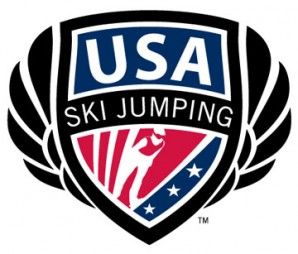
![Nordic Dave [P] courtesy of Dave Knoop](http://skitrax.com/wp-content/uploads/2013/05/nordic-dave.2.jpg)
![The early years as as runner... [P] courtesy of Dave Knoop](http://skitrax.com/wp-content/uploads/2013/05/St.-George.jpg)
![David Knoop... at his day job. [P] courtesy of Dave Knoop](http://skitrax.com/wp-content/uploads/2013/05/Office.2.jpg)
![F1 Sprint Skate rollerskis [P] CWS](http://skitrax.com/wp-content/uploads/2013/05/P1060683.2.jpg)
![Skiers are made in the summer. [P] APU](http://skitrax.com/wp-content/uploads/2013/05/Picture1.jpg)
![Experience glacier training. [P] APU](http://skitrax.com/wp-content/uploads/2013/05/Picture-2.jpg)
![Summer skiing on the glacier. [P] APU](http://skitrax.com/wp-content/uploads/2013/05/Picture-3.jpg)
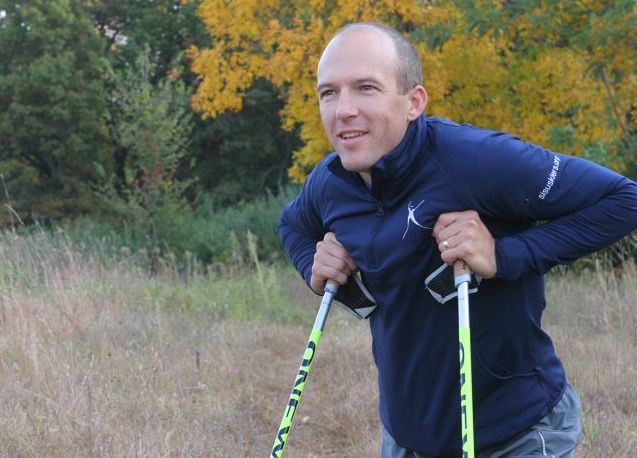
![Rosie Brennan (APU) is the 2012/13 USSA SuperTour women's overall winner. [P] Andy Canniff/Swix](http://skitrax.com/wp-content/uploads/2013/05/Rosie-Brennan-APU-P-Andy-CanniffSwix-200x300.jpg)
![Sharon (l) and Shirley Firth [P] courtesy of CCC](http://skitrax.com/wp-content/uploads/2013/05/Shirley-Firth-lg.2.jpg)
![Shirley Firth Larsson [P] courtesy of CCC](http://skitrax.com/wp-content/uploads/2013/05/Shirley-Firth-Larsson.jpg)
![At Rideau Hall after first European trip in 1969 (l-r): Anita Allen, Sharon Firth, Roger Allen, Fred Kelly, John Turo, David Cook, Harold Cook, Bjorger Pettersen, Roseanne Allen, Prime Minister Trudeau and Shirley Firth. [P] courtesy of Bjorger Pettersen](http://skitrax.com/wp-content/uploads/2013/05/Trudeau-scan0003-1.2.jpg)
![(l-r) Linda Dunbar, Sharon Firth, Brendan Green, Shirley Firth, Rosanna Crawford [P] courtessy of CCC](http://skitrax.com/wp-content/uploads/2013/05/Shirley-Firth-Group.jpg)


![[P] courtesy of Ivan Babikov](http://skitrax.com/wp-content/uploads/2013/04/Babikov.jpg)

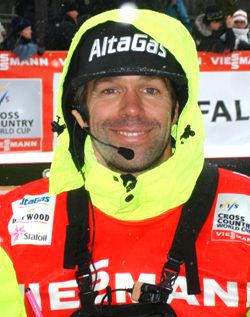
![Johnny Spillane [P] Sarah Brunson/U.S. Ski Team](http://skitrax.com/wp-content/uploads/2013/04/JohnnySpillane-M.jpg)
![2003 World Championships in Val di Fiemme... GOLD. [P] Fischer](http://skitrax.com/wp-content/uploads/2013/04/Spillane2VDF.2.jpg)
![Team USA ruled at the Games (l-r): Billy Demong, Johnny Spillane, Todd Lodwick, Brett Cramerota [P] Heinz Ruckemann](http://skitrax.com/wp-content/uploads/2013/04/US-Team-OLY20100223805.2.jpg)
![Coach Dave Jarret congratulates Spillane on his WCup win in Obertsdorf [P] Egon Theiner](http://skitrax.com/wp-content/uploads/2013/04/Jarret-Spillane-41.2010.jpg)
![Spillane wins silver at Vancouver 2010 [P] Heinz Ruckemann](http://skitrax.com/wp-content/uploads/2013/04/Spillane-OLY2010021405.2.jpg)
![Spillane wins silver at Vancouver 2010 [P] Heinz Ruckemann](https://skitrax.com/wp-content/uploads/2013/04/Spillane-OLY2010021405.2-125x125.jpg)
![Coach Dave Jarret congratulates Spillane on his WCup win in Obertsdorf [P] Egon Theiner](https://skitrax.com/wp-content/uploads/2013/04/Jarret-Spillane-41.2010-125x125.jpg)
![Johnny Spillane [P] Sarah Brunson/U.S. Ski Team](https://skitrax.com/wp-content/uploads/2013/04/JohnnySpillane2-M-125x125.jpg)
![Johnny Spillane [P] Sarah Brunson/U.S. Ski Team](https://skitrax.com/wp-content/uploads/2013/04/JohnnySpillane-2-125x125.jpg)
![World Cup win in Oberhof [P] Egon Theiner](https://skitrax.com/wp-content/uploads/2013/04/Spillane-32.2010-125x125.jpg)
![Team USA ruled at the Games (l-r): Billy Demong, Johnny Spillane, Todd Lodwick, Brett Cramerota [P] Heinz Ruckemann](https://skitrax.com/wp-content/uploads/2013/04/US-Team-OLY20100223805.2-125x125.jpg)
![Spillane is all smile winning silver at Vancouver 2010 [P] Heinz Ruckemann](https://skitrax.com/wp-content/uploads/2013/04/Spillane-OLY2010021405.3-125x125.jpg)
![2003 World Championships in Val di Fiemme… GOLD. [P] Fischer](https://skitrax.com/wp-content/uploads/2013/04/Spillane2VDF.2-125x125.jpg)
![Johnny Spillane [P] Sarah Brunson/U.S. Ski Team](https://skitrax.com/wp-content/uploads/2013/04/Johnny_Spillane_Individual_10k_2-M2-125x125.jpg)
![Johnny Spillane [P] Sarah Brunson/U.S. Ski Team](https://skitrax.com/wp-content/uploads/2013/04/JohnnySpillane-M-125x125.jpg)
![Sylvan with Liz and Gus chasing dogs in the background. [P] Jessie Diggins](http://skitrax.com/wp-content/uploads/2013/04/Sylvan-19-475x356.jpg)
![Sadie (l) and Bird (Kris Freeman) [P] Liz Stephen](http://skitrax.com/wp-content/uploads/2013/04/Sadie-and-Bird-photo-16-475x354.jpg)
![Cheering at the men's 50km CL (l-r) Sophie, Erika, Jessie and Molly [P] Lilly Caldwell](http://skitrax.com/wp-content/uploads/2013/04/Sophie-Erika-Jessie-Molly-50km-475x356.jpg)
![It'd be pretty embarrassing to mess up something this well marked. [P] Jessie Diggins](http://skitrax.com/wp-content/uploads/2013/04/Bottles-Feed-Station-photo-17-475x356.jpg)

![George LeFeuvre [P] courtesy of CCC](http://skitrax.com/wp-content/uploads/2013/04/George-LeFeuvre.jpg)
![Pierre Harvey (CAN) finished 4th in the Men's 45km CL [P] Maxime Bellefleur](http://skitrax.com/wp-content/uploads/2013/04/Pierre-Harvey-CAN-P-Maxime-Bellefleur-e1365695226530-200x200.jpg)
![Freeman wins his fifth 50km title... [P] Mark Nadell](http://skitrax.com/wp-content/uploads/2013/04/supertour2013-M50k_2776.21.jpg)
![Newell [P] Mark Nadell](http://skitrax.com/wp-content/uploads/2013/04/supertour2013-M50k_2183.2.Newell.2.jpg)
![Ulsund with Elliott behind... [P] Mark Nadell](http://skitrax.com/wp-content/uploads/2013/04/supertour2013-M50k_1972.Ulsund.jpg)
![Elliott [P] Mark Nadell](http://skitrax.com/wp-content/uploads/2013/04/supertour2013-M50k_1987.Elliott.jpg)
![Freeman is the man... [P] Mark Nadell](http://skitrax.com/wp-content/uploads/2013/04/supertour2013-M50k_2170.Freeman.jpg)
![Newell (l) and Freeman [P] Mark Nadell](http://skitrax.com/wp-content/uploads/2013/04/supertour2013-M50k_2826.Newell.Freeman.2.jpg)
![Men's podium [P] Mark Nadell](http://skitrax.com/wp-content/uploads/2013/04/supertour2013-M50k_3205.M-Podium.jpg)
![Freeman wins his 16th career title… [P] Mark Nadell](https://skitrax.com/wp-content/uploads/2013/04/supertour2013-M50k_2776.3-125x125.jpg)
![Freeman wins his fifth 50km title… [P] Mark Nadell](https://skitrax.com/wp-content/uploads/2013/04/supertour2013-M50k_2776.21-125x125.jpg)
![Freeman [P] Mark Nadell](https://skitrax.com/wp-content/uploads/2013/04/supertour2013-M50k_2783.Freeman.2-125x125.jpg)
![Newell [P] Mark Nadell](https://skitrax.com/wp-content/uploads/2013/04/supertour2013-M50k_2183.2.Newell.2-125x125.jpg)
![Men’s podium [P] Mark Nadell](https://skitrax.com/wp-content/uploads/2013/04/supertour2013-M50k_3205.M-Podium-125x125.jpg)
![Ulsund with Elliott behind… [P] Mark Nadell](https://skitrax.com/wp-content/uploads/2013/04/supertour2013-M50k_1972.Ulsund-125x125.jpg)
![Freeman is the man… [P] Mark Nadell](https://skitrax.com/wp-content/uploads/2013/04/supertour2013-M50k_2170.Freeman-125x125.jpg)
![Newell (l) and Freeman [P] Mark Nadell](https://skitrax.com/wp-content/uploads/2013/04/supertour2013-M50k_2826.Newell.Freeman.2-125x125.jpg)
![Elliott [P] Mark Nadell](https://skitrax.com/wp-content/uploads/2013/04/supertour2013-M50k_1987.Elliott-125x125.jpg)
![Start… [P] Mark Nadell](https://skitrax.com/wp-content/uploads/2013/04/supertour2013-M50k_0062.Start_.2-125x125.jpg)
![Freeman leading as usual…[P] Mark Nadell](https://skitrax.com/wp-content/uploads/2013/04/supertour2013-M50k_1962.Freeman.2-125x125.jpg)
![Freeman leads Newell [P] Mark Nadell](https://skitrax.com/wp-content/uploads/2013/04/supertour2013-M50k_1964.Newell-125x125.jpg)
![Freeman in charge... [P] Mark Nadell](http://skitrax.com/wp-content/uploads/2013/04/supertour2013-classic_freeman.2.jpg)
![Bjornsen (l) battles Newell [P] Mark Nadell](http://skitrax.com/wp-content/uploads/2013/04/supertour2013-classic_bjornsen-Newell.2.jpg)
![Men's 15kmCL podium (l-r) Bjornsen 2nd, Freeman 1st, Newell 3rd [P] Mark Nadell](http://skitrax.com/wp-content/uploads/2013/04/supertour2013-classic_x-Mpodium.2.jpg)
![Randall (l) duking it out with Stephen [P] Mark Nadell](http://skitrax.com/wp-content/uploads/2013/04/supertour2013-classic-f_randall.2.jpg)
![Sadie Bjornsen [P] Mark Nadell](http://skitrax.com/wp-content/uploads/2013/04/supertour2013-classic-f_bjornsen.2.jpg)
![Liz Stephen [P] Mark Nadell](http://skitrax.com/wp-content/uploads/2013/04/supertour2013-classic-f_stephen.2.jpg)
![Women's 10kmCL podium (l-r) Bjornsen 2nd, Randall 1st, Stephen 3rd [P] Mark Nadell](http://skitrax.com/wp-content/uploads/2013/04/supertour2013-classic-f_Wpodium.2.jpg)
![Women's Prologue podium (l-r) Diggins 2nd, Randall 1st, Bjornsen 3rd [P] Mark Nadell](http://skitrax.com/wp-content/uploads/2013/04/supertour2013-prolog_W-podium.2.jpg)
![Erik Bjornsen [P] Mark Nadell](http://skitrax.com/wp-content/uploads/2013/04/supertour2013-prolog_bjornsen-e.2.jpg)
![Diggins [P] Mark Nadell](http://skitrax.com/wp-content/uploads/2013/04/supertour2013-prolog_diggins-j.2.jpg)
![Sadie Bjornsen [P] Mark Nadell](http://skitrax.com/wp-content/uploads/2013/04/supertour2013-prolog_bjornsen-s1.2.jpg)
![Randall [P] Mark Nadell](http://skitrax.com/wp-content/uploads/2013/04/supertour2013-prolog_randall-k1.2.jpg)
![Mark Iverson [P] Mark Nadell](http://skitrax.com/wp-content/uploads/2013/04/supertour2013-prolog_iverson-m.2.jpg)
![Men's podium (l-r) Johnsgaard 2nd, Bjornsen 1st, Iverson and Sinnot 3rd [P] Mark Nadell](http://skitrax.com/wp-content/uploads/2013/04/supertour2013-prolog_M-podium-bjornsen-johnsgaard-iverson1.21.jpg)
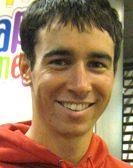
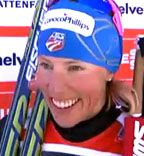
![Cockney [P] Jim Hegan](http://skitrax.com/wp-content/uploads/2013/03/Cockney-8584064063_2df5de3059_b.jpg)
![McMurtry [P] Jim Hegan](http://skitrax.com/wp-content/uploads/2013/03/McMurtry-8585164564_4c7eef4f48_c.jpg)
![Heidi Widmer [P] Jim Hegan](http://skitrax.com/wp-content/uploads/2013/03/Heidi-Widmer-8584067511_3d43b3e731_c.jpg)
![Kromm [P] Jim Hegan](http://skitrax.com/wp-content/uploads/2013/03/Kromm-8584067907_d792bbca8c_c.jpg)
![Marit Bjoergen (NOR) celebrates another victory [P] Nordic Focus](http://skitrax.com/wp-content/uploads/2013/03/Bjoergen-f2b768bc8f1379a87b55c726d25670d6.jpg)
![Kikkan Randall (USA) [P] Nordic Focus](http://skitrax.com/wp-content/uploads/2013/03/randall130313al014.2.jpg)
![Norway's Weng (r) nips Kowalczyk at the line. P] Nordic Focus](http://skitrax.com/wp-content/uploads/2013/03/Kowalczyk-Weng-a34b94f7a6988032060d3579aa8ca7ef.jpg)
![Kikkan Randall (USA)...[P] Nordic Focus](http://skitrax.com/wp-content/uploads/2013/03/Randall-240213al127.3.jpg)
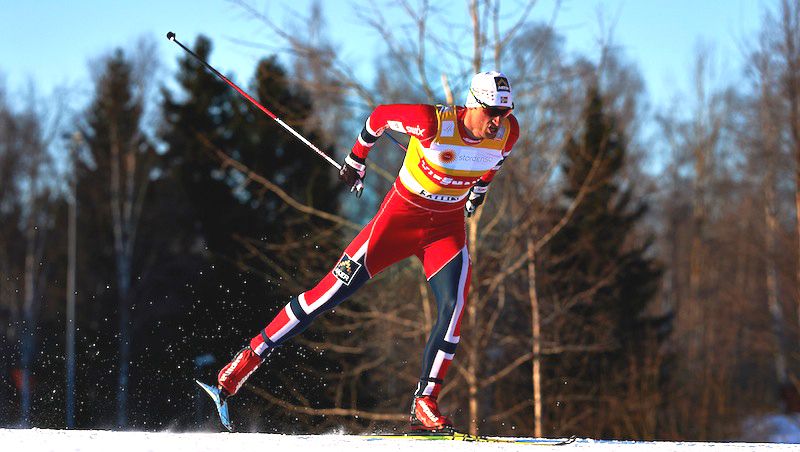
![Kikkan Randall (USA) [P] Nordic Focus](http://skitrax.com/wp-content/uploads/2013/03/Kikkan-Randall-USA-copy.jpg)
![Marit Bjoergen (NOR) [P] Nordic Focus](http://skitrax.com/wp-content/uploads/2013/03/Marit-Bjoergen-NOR-copy.jpeg)
![Charlotte Kalla (SWE) [P] Nordic Focus](http://skitrax.com/wp-content/uploads/2013/03/Charlotte-Kalla-SWE-copy1.jpg)
![Holly Brooks (USA) [P] Nordic Focus file photo](http://skitrax.com/wp-content/uploads/2013/03/Brooks170213mf371.2.jpg)

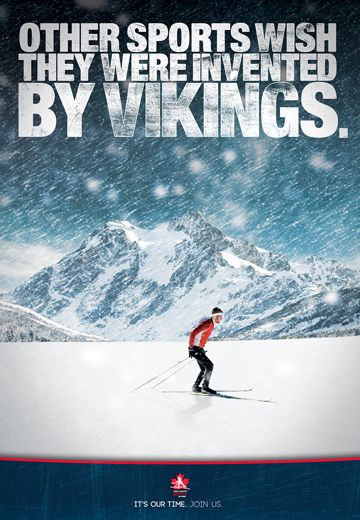
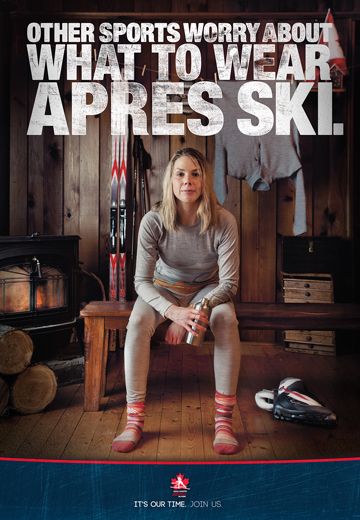

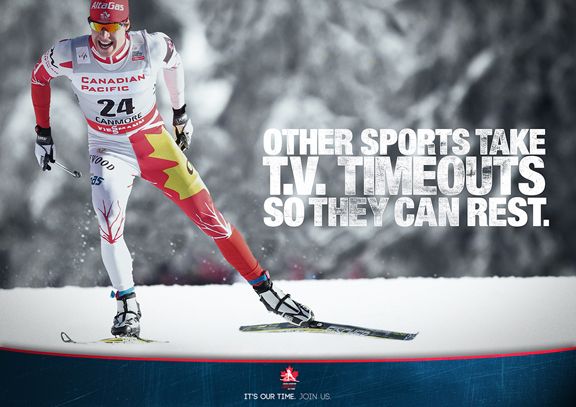
![Sprint Cup overall winners (l) Kikkan Randall (USA) and Emil Joensson (SWE) [P] Nordic Focus](http://skitrax.com/wp-content/uploads/2013/03/Randall-Joenssen-d067e5268ec251e6e3fafa387aa04182.21.jpg)
![Wenzel at the range on his way to men's Pursuit victory [P] Heinz Ruckemann](http://skitrax.com/wp-content/uploads/2013/03/Wenzel-WHP2013031703.jpg)
![Vaillancourt on her way to her second gold [P] Heinz Ruckemann](http://skitrax.com/wp-content/uploads/2013/03/Vaillancourt-WHP2013031707.2.jpg)
![Junior women's pursuit podium [P] Heinz Ruckemann](http://skitrax.com/wp-content/uploads/2013/03/Junior-W-Pursuit-WHP2013031708.2.jpg)
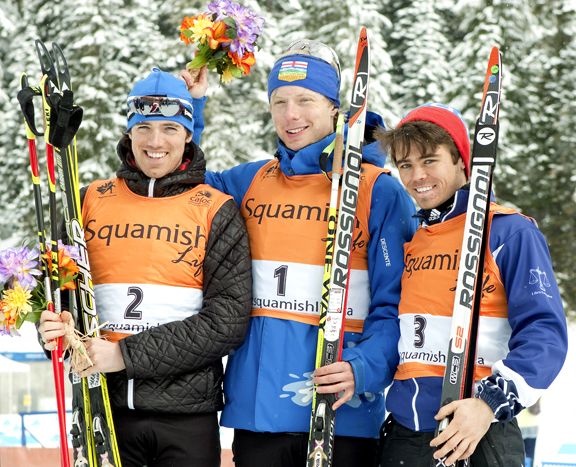
![Sarah Hendrickson [P] Women's Ski Jumping USA](http://skitrax.com/wp-content/uploads/2013/03/Sarah-Hendrickson.21.jpg)
![Tim Burke (USA) [P] Nordic Focus](http://skitrax.com/wp-content/uploads/2013/03/Burke03172013cm147.jpg)
![Martin Fourcade (FRA) wins Mass Start final race and all four individual crystal Globes. [P] Nordic Focus](http://skitrax.com/wp-content/uploads/2013/03/Fourcade-03132013cm125.2.jpg)
![Gabriela Soukalova (CZE) wins women's 12.5km Mass Start [P] Nordic Focus](http://skitrax.com/wp-content/uploads/2013/03/Soukalova03172013cm088.jpg)
![Therese Johaug (NOR) celebrates her win [P] Nordic Focus](http://skitrax.com/wp-content/uploads/2013/03/Johaug170313mf045.jpg)
![Liz Stephen (USA) nails a PB 9th in women's 30km FR [P] Nordic Focus](http://skitrax.com/wp-content/uploads/2013/03/Stephen170313mf013.2.jpg)
![Diggins at the front of her group... [P] Nordic Focus](http://skitrax.com/wp-content/uploads/2013/03/Diggins-170313mf029.2.jpg)
![Brooks (l) and Diggins en route... [P] Nordic Focus](http://skitrax.com/wp-content/uploads/2013/03/Brooks-Diggins-170313mf066.2.jpg)
![Final women's 30km FR podium (l-r) Kowalczyk 2nd, Johaug 1st, Tchekaleva 3rd [P] Nordic Focus](http://skitrax.com/wp-content/uploads/2013/03/W-podium-170313al3071.jpg)
![Therese Johaug (NOR) celebrates her win at finish line [P] Nordic Focus](https://skitrax.com/wp-content/uploads/2013/03/Johaug-Wins-2013-03-17-at-8.06.32-AM-125x125.jpg)
![MOJ ...Saxton (r) takes Hanneman [P] Bert Boyer](http://skitrax.com/wp-content/uploads/2013/03/MOJ-Saxton-Hanneman.jpg)
![MOJ-leaders [P] Bert Boyer](http://skitrax.com/wp-content/uploads/2013/03/MOJ-leaders.jpg)
![FOJ-Hannah Boyer [P] Bert Boyer](http://skitrax.com/wp-content/uploads/2013/03/FOJ-Hannah-Boyer.jpg)
![MJ1-Keegan Swirbul [P] Bert Boyer](http://skitrax.com/wp-content/uploads/2013/03/MJ1-Keegan-Swirbul.jpg)
![FJ1-Tiril Weng-Lotta Weng [P] Bert Boyer](http://skitrax.com/wp-content/uploads/2013/03/FJ1-Tiril-Weng-Lotta-Weng.jpg)
![FJ1-Marion Woods [P] Bert Boyer](http://skitrax.com/wp-content/uploads/2013/03/FJ1-Marion-Woods.jpg)
![MJ1-Mattis Stenshagen [P] Bert Boyer](http://skitrax.com/wp-content/uploads/2013/03/MJ1-Mattis-Stenshagen.jpg)
![FJ2 Julia Kern [P] Bert Boyer](http://skitrax.com/wp-content/uploads/2013/03/FJ2-Julia-Kern.jpg)
![MJ2-Koby Gordon [P] Bert Boyer](http://skitrax.com/wp-content/uploads/2013/03/MJ2-Koby-Gordon.jpg)
![MOJ …Saxton (r) takes Hanneman [P] Bert Boyer](https://skitrax.com/wp-content/uploads/2013/03/MOJ-Saxton-Hanneman-125x125.jpg)
![FOJ-Hannah [P] Bert Boyer](https://skitrax.com/wp-content/uploads/2013/03/FOJ-Hannah-Boyer2.2-125x125.jpg)
![MJ2 leaders… [P] Bert Boyer](https://skitrax.com/wp-content/uploads/2013/03/MJ2-Leaders-125x125.jpg)
![MOJ-leaders [P] Bert Boyer](https://skitrax.com/wp-content/uploads/2013/03/MOJ-leaders-125x125.jpg)
![FJ1-Marion Woods [P] Bert Boyer](https://skitrax.com/wp-content/uploads/2013/03/FJ1-Marion-Woods-125x125.jpg)
![FJ1-Tiril Weng-Lotta Weng [P] Bert Boyer](https://skitrax.com/wp-content/uploads/2013/03/FJ1-Tiril-Weng-Lotta-Weng-125x125.jpg)
![MJ1-Mattis Stenshagen [P] Bert Boyer](https://skitrax.com/wp-content/uploads/2013/03/MJ1-Mattis-Stenshagen-125x125.jpg)
![FOJ-Hannah Boyer [P] Bert Boyer](https://skitrax.com/wp-content/uploads/2013/03/FOJ-Hannah-Boyer-125x125.jpg)
![MJ1-Sjur Slettom [P] Bert Boyer](https://skitrax.com/wp-content/uploads/2013/03/MJ1-Sjur-Slettom-125x125.jpg)
![MJ1-Keegan Swirbul [P] Bert Boyer](https://skitrax.com/wp-content/uploads/2013/03/MJ1-Keegan-Swirbul-125x125.jpg)
![FJ2 leaders [P] Bert Boyer](https://skitrax.com/wp-content/uploads/2013/03/FJ2-leaders-125x125.jpg)
![FJ2 Julia Kern [P] Bert Boyer](https://skitrax.com/wp-content/uploads/2013/03/FJ2-Julia-Kern-125x125.jpg)
![MJ2-Koby Gordon [P] Bert Boyer](https://skitrax.com/wp-content/uploads/2013/03/MJ2-Koby-Gordon-125x125.jpg)
![Lowell Bailey scores another strong top-ten result [P] Nordic Focus](http://skitrax.com/wp-content/uploads/2013/03/Lowell-Bailey_1211.jpg)
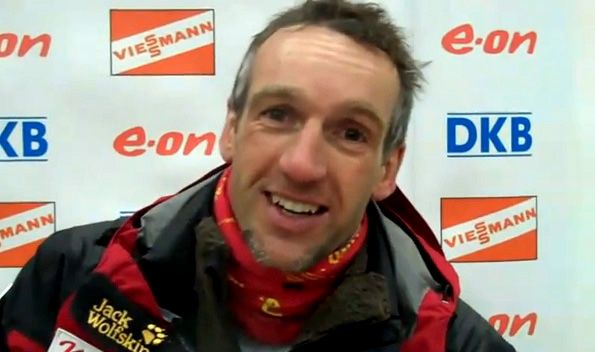
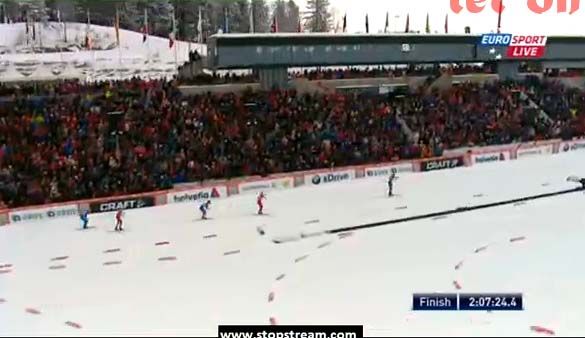
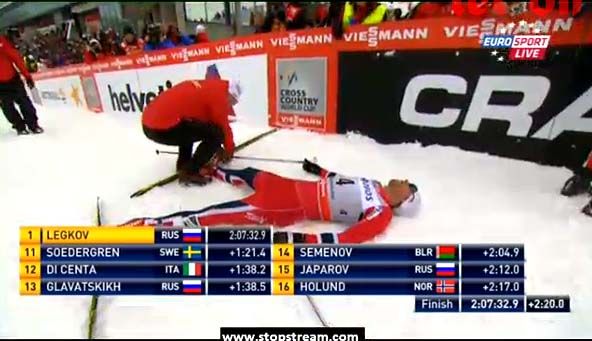
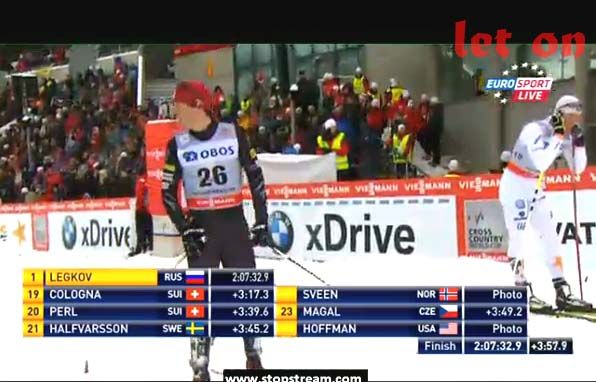
![Gabriela Soukalova (CZE) [P] Nordic Focus](http://skitrax.com/wp-content/uploads/2013/03/Soukalova03142013cm009.4.jpg)
![Susan Dunklee [P] Nordic Focus](http://skitrax.com/wp-content/uploads/2013/03/Dunklee03142013cm040.jpg)
![Final podium (l-r) Henkel, 2nd, Soukalova 1st, Goessner 3rd [P] Nordic Focus](http://skitrax.com/wp-content/uploads/2013/03/Podium03142013cm002.2.jpg)
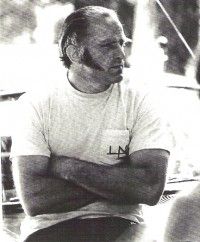
![Northug bests Poltoranin (l) for the win. [P] Nordic Focus](http://skitrax.com/wp-content/uploads/2013/03/Northug-130313al094.jpg)
![Len Valjas (CAN) [P] Nordic Focus](http://skitrax.com/wp-content/uploads/2013/03/valjas130313al041.jpg)
![Andrew Nevell (USA) [P] Nordic Focus](http://skitrax.com/wp-content/uploads/2013/03/newell130313al034.jpg)
![Petter Northug (NOR) [P] Nordic Focus](http://skitrax.com/wp-content/uploads/2013/03/northug130313al105.jpg)
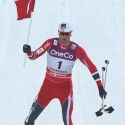
![Len Valjas (CAN) [P] Nordic Focus](https://skitrax.com/wp-content/uploads/2013/03/valjas130313al041-125x125.jpg)
![Alexey Poltoranin (KAZ) [P] Nordic Focus](https://skitrax.com/wp-content/uploads/2013/03/poltoranin130313al030-125x125.jpg)
![Northug bests Poltoranin (l) for the win. [P] Nordic Focus](https://skitrax.com/wp-content/uploads/2013/03/Northug-130313al094-125x125.jpg)
![(l-r) Poltoranin and Northug [P] Nordic Focus](https://skitrax.com/wp-content/uploads/2013/03/Northug-Poltaranin-130313al096-125x125.jpg)
![Andrew Nevell (USA) [P] Nordic Focus](https://skitrax.com/wp-content/uploads/2013/03/newell130313al034-125x125.jpg)
![Alex Harvey (CAN) [P] Nordic Focus](https://skitrax.com/wp-content/uploads/2013/03/harvey130313al044.2-125x125.jpg)
![Petter Northug (NOR) [P] Nordic Focus](https://skitrax.com/wp-content/uploads/2013/03/northug130313al105-125x125.jpg)
![Men’s podium (l-r) Poltoranin 2nd, Northug 1st, Kriukov 3rd [P] Nordic Focus](https://skitrax.com/wp-content/uploads/2013/03/M-podium-130313al066-125x125.jpg)
![Petter Northug (NOR) [P] Nordic Focus](https://skitrax.com/wp-content/uploads/2013/03/northug130313al105.2-125x125.jpg)
![Kowalczyk (l) defeats Weng for her first Drammen win and the overall WCup title [P] Nordic Focus](http://skitrax.com/wp-content/uploads/2013/03/Kowalczyk-130313al087.jpg)
![Kikkan Randall (USA) - her best result in Drammen [P] Nordic Focus](http://skitrax.com/wp-content/uploads/2013/03/randall130313al014.jpg)
![Daria Gaiazova (CAN) [P] Pam Doyle](http://skitrax.com/wp-content/uploads/2013/03/Gaiazova-161212dr057.2.2.jpg)
![Final women's podium (l-r) Weng 2nd, Kowalczyk 1st, Oestberg 3rd [P] Nordic Focus](http://skitrax.com/wp-content/uploads/2013/03/W-podium-130313al073.jpg)
![Norway's Stenshagen [P] Bert Boyer](http://skitrax.com/wp-content/uploads/2013/03/Stenshagen-JN-Skate-199.2.jpg)
![Logan Hanneman [P] Bert Boyer](http://skitrax.com/wp-content/uploads/2013/03/Logan-Hanneman-JN-Skate-231.2.jpg)
![Haywood Ski Nationals... [P] CCC](http://skitrax.com/wp-content/uploads/2013/03/Haywood1.jpg)